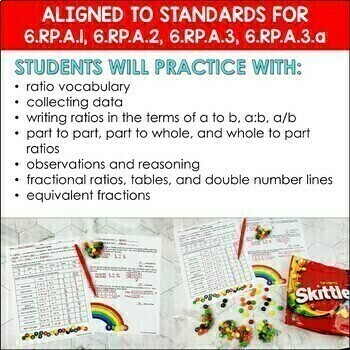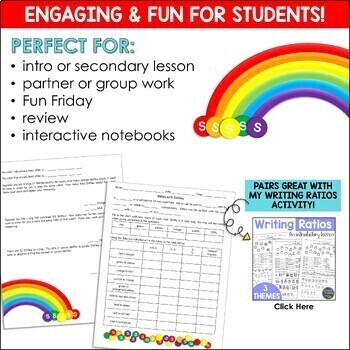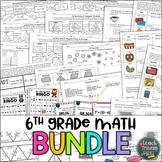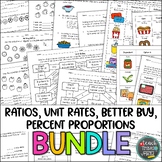Ratios with Skittles
- PDF
What educators are saying
Also included in
- Say goodbye to boring math lessons! This 6th grade math bundle incorporates class notes, printable worksheets, and engaging activities to keep learners engaged and excited about math.Whether you're an educator seeking comprehensive teaching aids or a parent dedicated to supporting your child's learnPrice $94.50Original Price $126.50Save $32.00
- Ratios, unit rates, and proportions! Oh my! This bundle of math lessons are PERFECT for the busy teacher - with 8 NO PREP math activities. Enjoy real world scenarios with visits to the movies and grocery store to determine better buys, plan a Thanksgiving dinner with unit rates, and count ratios witPrice $9.80Original Price $12.25Save $2.45
Description
Looking for a fun and engaging lesson to introduce ratios that your students will love? This activity gives a break from the normal routine and best of all - it ends with food! Students will practice with collecting data from a bag of Skittles, then using this data will fill in a table where they must write three types of ratios and the corresponding reduced fraction. On the back are several questions that assess student understanding of ratios. My kiddos stayed engaged the entire time with the incentive of food waiting for them at the end.
Who says you can't have fun while learning?! ☺
Students will practice with:
- ratio vocabulary
- collecting data
- writing ratios in the terms of a to b, a:b, a/b
- part to part, part to whole, and whole to part ratios
- observations and reasoning
- fractional ratios, tables, and double number lines
- equivalent fractions
Please note: this is a replica of my M&M activity, just with Skittles instead of M&Ms. If you would like the same activity with a different candy, please click HERE.
More Ratio/Rate/Proportion Fun:
♥ Have fun learning!
Allison from Teach Travel Math
Follow My Store. Don’t miss out on new products, sales, and freebies!
Don’t forget to leave feedback to earn TpT credits for future purchases! Every 20 credits is worth $1! Please take a moment to give a star rating and comment. If you have any issues with your purchase, please contact me before leaving a negative review. I will do my best to resolve the issue.
❱❱ Other Places You Can Find Me ❰❰
©2018 Allison Ford (Teach Travel Math)







